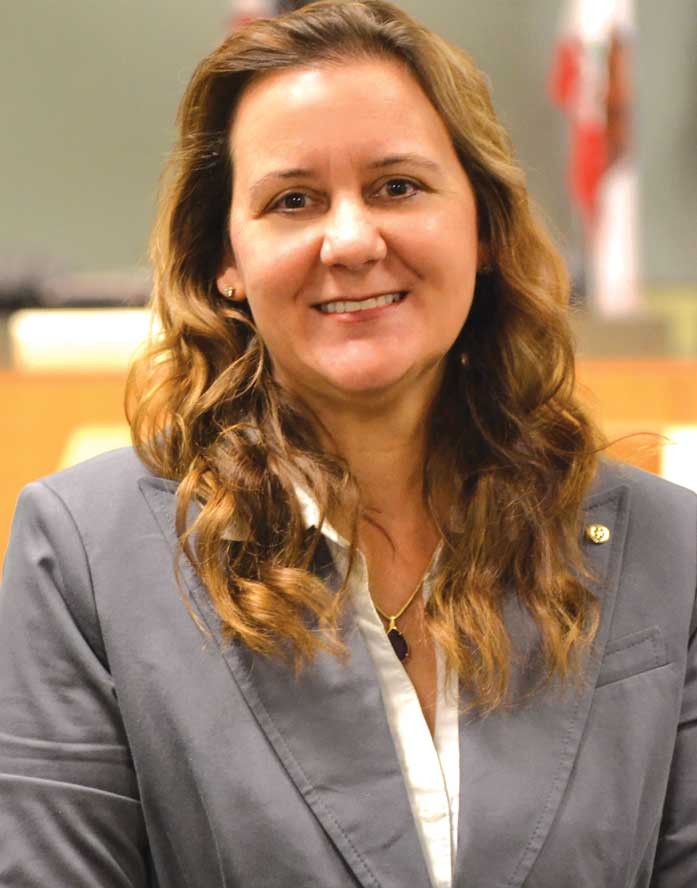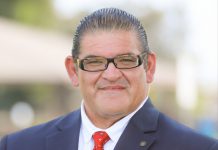By TRINA COFFMAN-GOMEZ
This article is a continuation of a series of transportation articles to inform the public about what is currently happening in the transportation sector throughout our county.
The impact this transportation planning document will have on our community today and for our future generations is profound. The Unified Corridor Investment Study will continue to be presented to the public during the public comment period before returning back to the Regional Transportation Commission (RTC) commissioners to vote on in January at the earliest.
The RTC just recently announced a new executive director that will begin in December and who will have the opportunity to review this study and provide the commission any feedback before there is a vote taken to finalize this document from its draft form into a working document.
As a commissioner representing Watsonville, I want to assure you that I have spent a great deal of time listening to the public and hearing what they have shared concerning many of their ideas and suggestions. In the process of meeting with so many people, I wanted to take the time to clarify some of the concerns and misconceptions that I have been hearing. In next week’s article, I will address more common concerns.
• We are not getting the information to enough people: The RTC staff has made their best effort available with the resources they have to get this document to the public for their review. This includes translation services where it is feasible at the public workshops, including a link on their website in Spanish with the capability to translate the materials into Spanish. Several public workshops and focus groups have been held, council presentations have been made, and their frequently asked questions are posted on their website with updates continually being made as they gather input on the various alternatives in this study.
• We need a peer review: A well-respected professional consulting firm, Kimley-Horn, was selected to provide an objective, independent, unbiased analysis of the various reports and studies that have been completed throughout the course of this discussion, including the Caltrans 2015 draft Highway 1 EIR. In addition, our new executive director will provide an opinion. Since he is well-versed in this industry we can expect his synopsis of this study would be considered as valuable as a peer review.
• We need more time: The investigation of highway safety improvements, rail trail development, and passenger rail service scenarios spans decades and has brought us to this important point of identifying those projects that are feasible to pursue. This time has also eliminated concepts that don’t serve the public well that would not be feasible to fund or have the ability to be built out due to land use constraints. For example, rail transit in the highway corridor simply can’t be done for reasons of cost and lack of physical space.
• Why is it taking too long? Many people feel that since the passage of Measure D two years ago, we should be starting these projects already. Measure D made Santa Cruz County a “self-help” county to fund street and road improvements, including Highway 1 projects. This is a small portion of the overall cost for these highway improvements that still require state and federal funding along with Caltrans support and approval. This is the pace of government. The first major project to offer any relief to Highway 1 will not see a shovel until 2020. The RTC has assured us that they are in the project design phase for the Measure D commitments so that these projects can start once funding is secured.
• The study undermines the poorer communities that cannot afford these options: County taxpayers regularly contribute to state and federal transportation funds that are spent in other communities. These are the funds our county would be eligible to apply for. For example, the county share, by population formula based off of the 2018 Caltrans State Rail Plan, is close to $1 billion. This is where our contribution remains to be used, which will be spent by other communities if we don’t apply for these funds. There is a misconception that poorer communities do not have the ability to afford transit, but transit has actually been proven to be one of the greatest benefits to poorer communities that can barely afford rent, food and medical care, much less pay to maintain one or more motor vehicles for lack of good transit.
• The commissioners have a lack of understanding of the issues: The commissioners are largely elected officials who not only represent their constituents and communities, they also rely on professional trained staff for guidance in making policy and there exists rigorous local city, county and regional plans and agency oversight to ensure best practices are employed, valid data gathered and utilized, and community input gathered in advance of making important funding and planning decisions. Many of the commissioners are well-rounded on transportation demands and constraints as these challenges are also part of land use planning that is a regular part of their agenda.
• Choosing rail on the corridor will kill highway projects if we approve the rail option: Highway funds and transit funds are in separate lock boxes or grant funding resources. There are very few funding programs that don’t come with specific conditions. We all pay into highway funds and we all pay into transit funds, and we would be smart to apply for both.
•••
Trina Coffman-Gomez is a councilwoman for the City of Watsonville and is also the city’s representative on the Regional Transportation Commission. She is writing a series of articles to break down the information on the decisions and projects the RTC will identify to improve moving people in Santa Cruz County.













